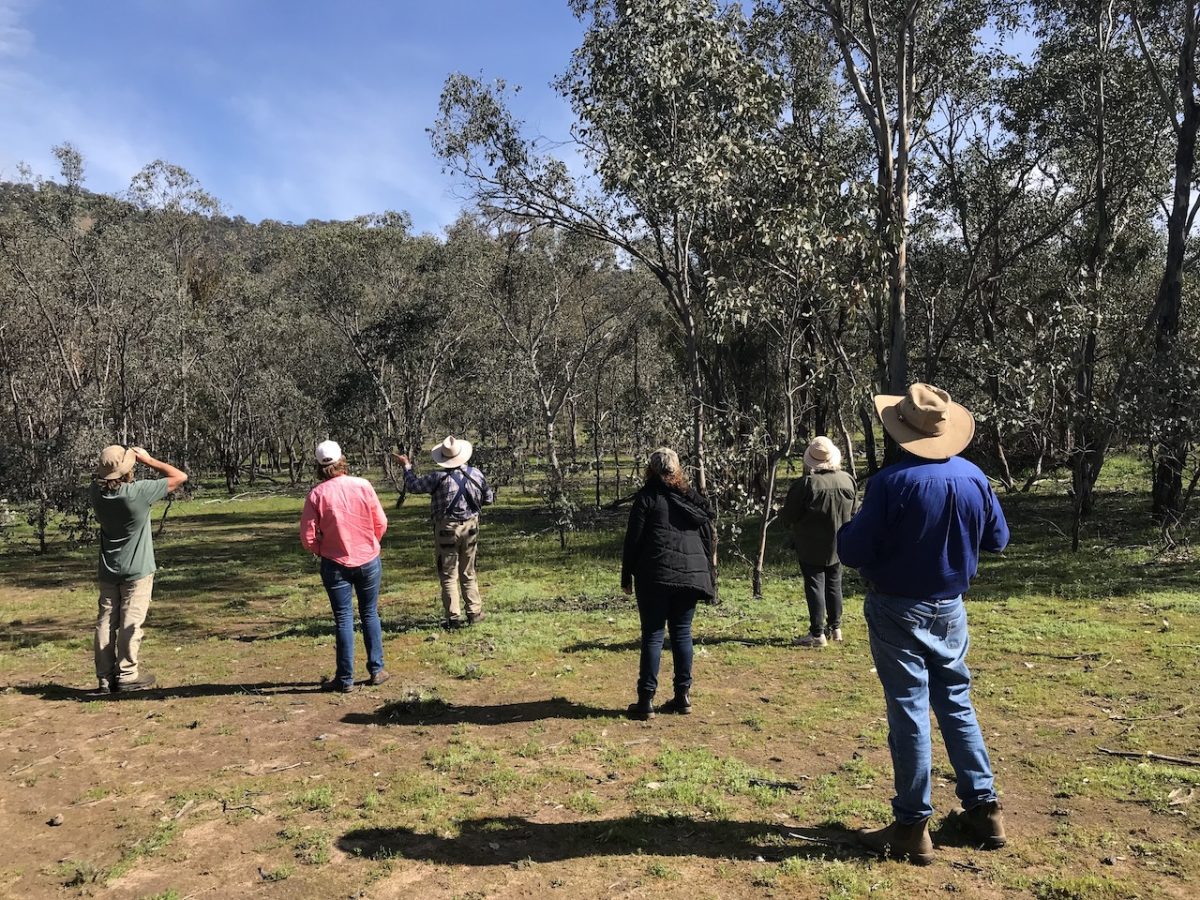
A fixed camera set up to record images of feral pigs and foxes captured this wedge-tailed eagle. Photo: The Angle, Bigga.
Clearing of agriculture has been reducing Australia’s birdlife for many years, but there is another setback taking an unnecessary toll in the Upper Lachlan Shire.
Ecologist Tony Saunders says the biggest threat to the wedge-tailed eagle is people driving at speed at night hitting kangaroos and wallabies on the road and not stopping to remove the carcass. Consequently, the eagles are hit when they land on the roadkill to feed on it.
“You should stop and take it right off to the edge of the fence line because the wedge-tailed lands on the carcass in the middle of the road and it takes a fair bit of effort to get off the ground,” he said. “I’ve had one across my windscreen after it had barely taken off in time.”
Eagles follow the roads because they know an easy meal often awaits them on the ground.
Having surveyed birds in the Upper Lachlan Shire, where he has lived for 20 years, Tony knows farmers will complain about wedge-tailed eagles, which take lambs occasionally.
“But basically, they will only feed on dead animals, they are not hunters of sheep and lambs, and they will attack rabbits so they reduce the competition for pasture,” he said.
“If anything, a wedge-tailed eagle is a farmer’s friend because, one, it is cleaning up diseased animals, and secondly, it is cleaning out rabbits, which is the competition for food.”
An independent consultant engaged by consultancy firms, the shire council, Land for Wildlife and Landcare groups, Tony regularly shares his knowledge of the shire’s flora and fauna. He will be leading “Breakfast with the Birds” on Saturday, 11 February, on a guided walk through reserves and farmland to spot woodland birds and identify them by sight and calls.
Experienced twitchers, beginner birdwatchers and citizen scientists are welcome to join the summer survey series, presented by the Kanangra-Boyd to Wyangala Conservation Partnership. They will walk through one of the most representative wildlife regions in eastern Australia, as Tony explains.
“It’s a good place for a mix of flora and fauna and we get the influence of east and west, depending on how dry it is,” he said. “In very wet years we will get eastern species that will move into the shire from further east. The flip side of the coin is during droughts we get western species moving into the shire as well. We are also on an important link on the Great Eastern Ranges heading north and south as well, so this is actually an important area for migration.”

Citizen scientists in the field gather information about birds, which helps to plan how to protect against further losses of vulnerable species. Photo: Kanangra-Boyd to Wyangala Conservation Partnership.
Sulphur-crested cockatoos, galahs and crimson and eastern rosellas thrive in the shire’s open grazing landscape, but the small insectivorous birds that need larger areas of remnant vegetation struggle and most are in the threatened and rare categories of Australian wildlife.
“The red-browed finch does fairly well and so does the superb fairy-wren. They adapt well, even to exotic gardens, and you get them in the peri-urban environment and in built-up areas as well,” Tony said.
But insectivorous birds such as hooded robins, brown treecreepers and speckled warblers, which feed exclusively on insects, are on the threatened list and while they can be found in the Upper Lachlan Shire, it is becoming more difficult to see them.
“Upper Lachlan has 13 threatened ecological communities, and most are threatened because they have been over-cleared in past agricultural history, there are small pockets of them scattered across the shire,” Tony said. “They were far more extensive than they are now. We are talking about 5 to 10 per cent of the original habitat is all that remains now.”
Tony lives in an area of box gum grassy woodland, highly valued for its nesting hollows. But only 3 per cent remains from Victoria to southern Queensland.
Encouraging people to join surveys helps gather data for monitoring bushland and can throw up surprises. A couple Tony introduced to the Crookwell Native Flora and Fauna Club sent him a photograph of a Rosenberg’s goanna, a threatened species and only the second one recorded in the shire. Happily, it was photographed on the couple’s property.
Breakfast with the Birds is free. For more information and to register, visit the website. If you have any questions, phone 0459 352 892 or email [email protected].








